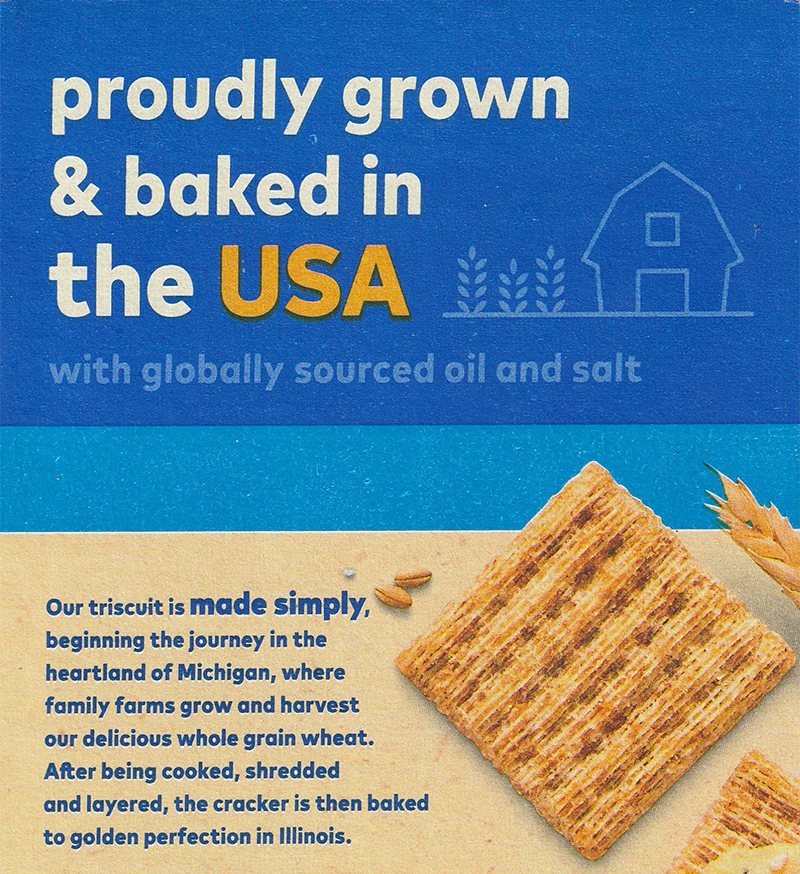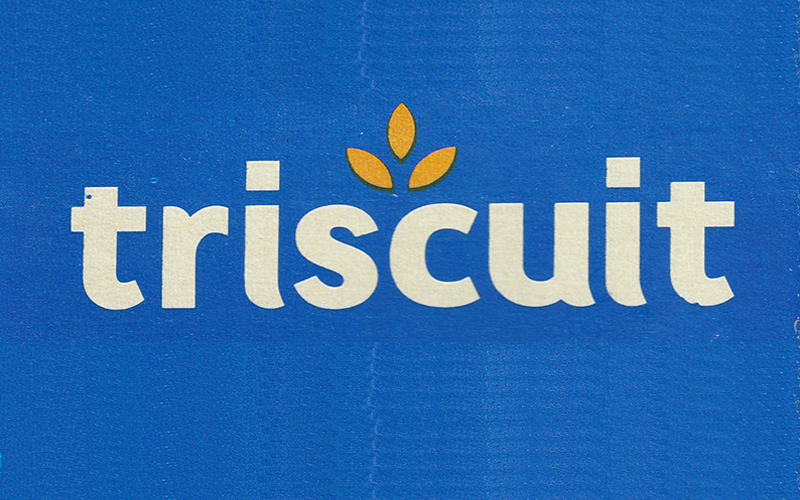I’ve written about the rules covering claiming that your product is “Made in the USA” here and here and here, and the FTC has a recently updated page on their website covering the rules here, so I’m not going to delve deeply into the rules. However, I did want to show you a good example of how to navigate the rules (albeit this is a food product).
Brief Overview
Briefly, the rules say that if you claim that a product is “Made in the USA” then virtually ALL of the components (ingredients) must also be made in the USA, AND the final assembly or manufacturing must be completed in the USA.
However, you can make a “qualified claim” where you put your own qualifications on which part or parts of the product are made in the USA, and which aren’t.
A Qualified Made in the USA Claim
Triscuts use the entire back panel of the box to promote their ties to the USA and the American heartland — even though not all of the ingredients are actually from the US. How to they do it? By qualifying their made in the USA claim to clarify what is from the USA and what is not.

They shout that their products are “proudly grown and baked in the USA” and quietly qualify that the oil and salt are globally sourced. To further add to the position that they are “American,” they describe where the wheat is grown (in the heartland of Michigan) and where the cracker is baked (in Illinois).
Beautifully done!
Soap and Cosmetics
Soap and cosmetic products frequently use ingredients that come from around the world. For soap, the US doesn’t have any coconut or palm plantations, and produces only about .2% of the olive oil in the world.1 The largest producer of cosmetic ingredients (by far) is China. So, you can see the problem with making an unqualified “Made in the USA” claim for most soap or cosmetic products (and that includes claims that the product is made in a STATE in the USA).
However, you can still make a qualified claim. Clearly state what ingredients come from the US, and that you actually make the product in your town, your state, or “in the USA.”
- North American Olive Oil Association. About Olive OIl ↩︎


Leave a Reply